Hi science fans, Mia here. Usually Bryan writes the blog posts but this topic is especially close to my heart, as someone who is a relatively recent convert to the joys of biology. Full disclosure, this question did not come from a child. It came from me, as a fully grown adult. Luckily I feel no shame at not knowing the answer to something – it is only when we accept our ignorance that we can learn.
Many years ago, Bryan and I adopted a bearded dragon and called him Bert. At the time I was a physics student who believed physics to be far superior to all other sciences, because it was logical and biology didn’t make any sense. Together, Bryan and Bert completely changed my mind.
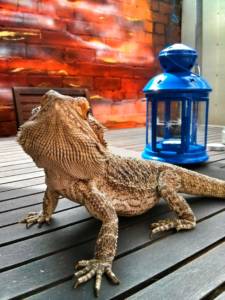
Bearded dragons make awesome pets!
When tiny little Bert curled up and went to sleep on his first night in our home, I worried about him. His heat lamp had gone out and his vivarium temperature had dropped from around 35 degrees to less than 20 degrees. Proving my ignorance about living things once and for all, I turned to Bryan and asked, “should I get him a little blanket?”.
Bryan looked incredulous. “A blanket?”, he asked, “But he’s cold blooded!”.
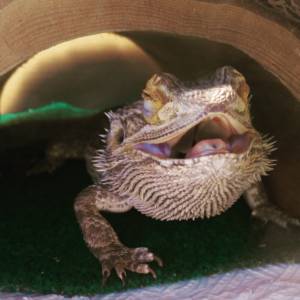
A blanket? On a cold blooded animal? Don’t make me laugh.
It was at that moment I realised that I had absolutely no idea what cold blooded meant. I remembered a lesson in school in which I memorised the sentence “Warm blooded animals are always the same temperature, and cold blooded animals are the same temperature as their surroundings”, but that didn’t explain what cold blooded meant, only how you could describe an animal that was cold blooded. The real answer is far more interesting and useful, and it is as logical as my beloved physics.
Living things are powered by chemical reactions. Chemical reactions cause muscles to contract, messages to be passed along the nervous system, and new cells to be built. These reactions require energy and chemical building blocks.
Cold blooded animals get the chemical building blocks and some of the energy from their food, but have to top up the energy by soaking up heat from their environment. As an example, after eating loads of locusts, Bert has to sit underneath his heat lamp and bask, otherwise his digestive system won’t have enough energy to digest the locusts.
In warm blooded animals something amazing has happened. We can break down food so quickly that we can warm ourselves up entirely by converting the energy in the food into heat – no need to sit underneath a heat lamp! Our food contains loads of energy that can be stored and released at our own leisure.
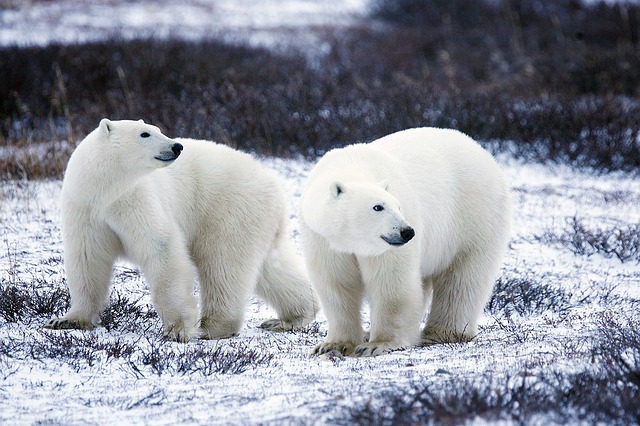
Polar bears can survive extremely cold conditions thanks to thick, insulating fur, amongst other key adaptations. Source: Pixabay
Being warm blooded is great because it allows us to survive away from the tropics. Polar bears can survive in the Arctic because they can release energy from their food in the form of heat. Warm blooded animals have gradually spread to colder and colder environments, specialising with adaptations like thick fur and blubber. Fur is a great insulator of heat, so when furry animals generate excess heat the fur prevents it from escaping, making them extra efficient at maintaining that optimal body temperature. We don’t have fur any more but at night time we can hold on to our excess heat by wrapping a blanket around us.
Meanwhile, our cold blooded friends don’t generate any heat from within. Wrapping them up in a blanket is not going to help them – if anything it will insulate them from outside heat, like a cold drink in a thermos flask – and prevent them from warming up. And that’s why you don’t put a blanket on a sleeping lizard.
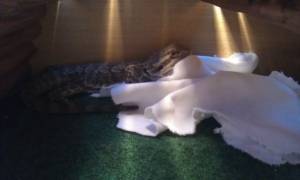
Bert does sometimes sleep underneath a blanket (yes, I was stubborn and gave it to him), but as far as we can tell, it seems to be a comfort/safety thing.
It’s worth mentioning that there are upsides to being cold blooded – so you don’t need to feel too sorry for poor Bert. Getting your heat energy from outside means you can eat a lot less food than us warm blooded creatures. We have to consume hundreds and hundreds of calories on a daily basis, whereas even the almighty komodo dragon (the largest lizard in the world) only has to eat around one large meal each month.
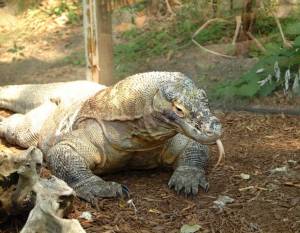
The almighty Komodo dragon. Source: Pixabay
Having a lizard has been a wonderful experience for me. Apart from being very cute and loveable he has inspired all sorts of questions that eventually persuaded me to switch to a biology degree. If you have a pet, encourage your child to question their behaviour, and compare the pet to themselves. Why does my dog have fur when I don’t? Why does my cat need to eat meat when I can be a vegetarian? Why does my rabbit eat its own poo? These are the questions that have inspired biologists for hundreds of years.
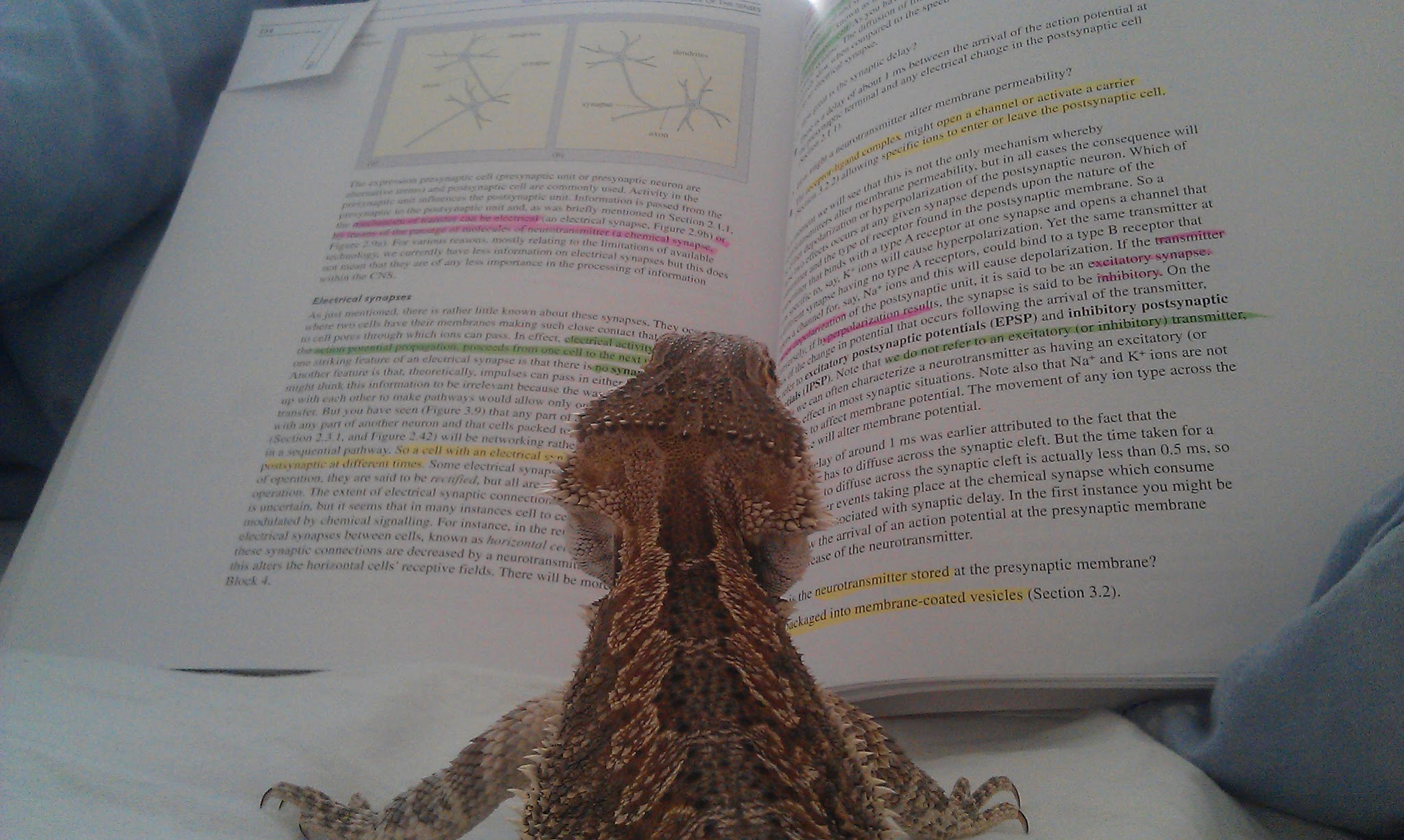
If you want to be good at biology, get a pet.
Would you like to spend time with your children doing something that’s fun and educational for them and hassle-free for you?
Letterbox Lab is a monthly science kit that arrives through your letterbox containing everything you need to perform incredible experiments with your children.
Your children will love it. It’s colour changing, fizzing reactons, slimes, things that glow in the dark, making helicopters and catapults. All with beautifully illustrated comic-style instructions that they will actually enjoy reading.
You’ll love it because it’s so easy. It just arrives at your house with everything you need to do all the experiments. Unlike other science kits there’s no looking in the back of cupboard for cream of tartar or figuring out where you can buy propanol on a Sunday afternoon. You just open the box and get started with ease.
Find out more about our unique series of science kits here

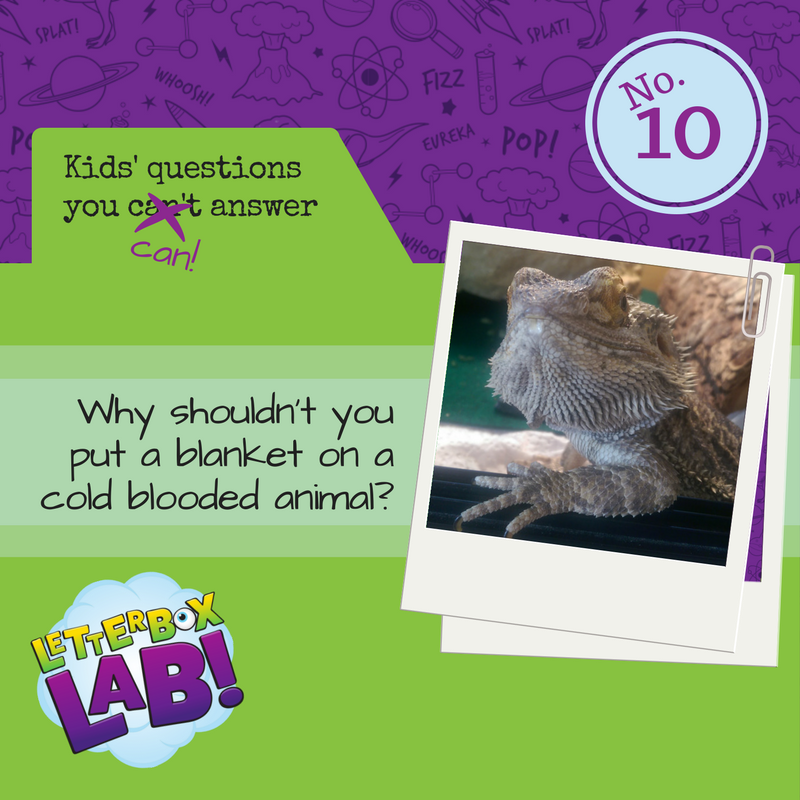


4 Comments
Just because they don’t make their own heat doesn’t mean they can use a blanket to retain basking heat.
So I should not use a blanket on my bearded dragon he has a small heating pad under his tiles that he sleeps on and then I cover him with a light cloth he’s always toasty in the morning is it ok if I do that
They cannot feel the heat from under Neath them and a under tank heating pad could cause a burn.
Let me correct myself… I realized I didn’t word that correctly.. Technically they can feel the heat from underneath but cannot thermoregulate it well so the under tank heating pads can lead to burns.
Add Comment